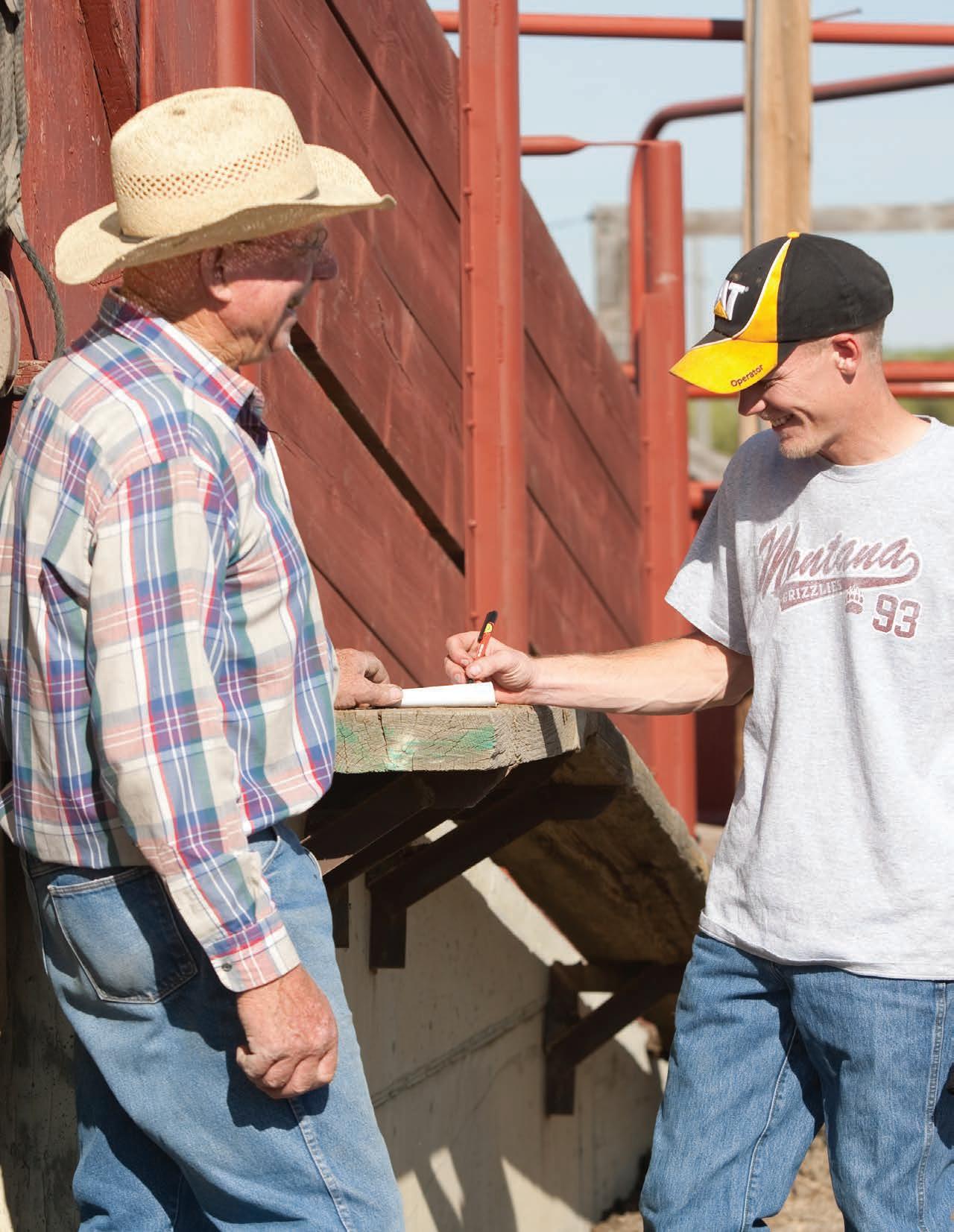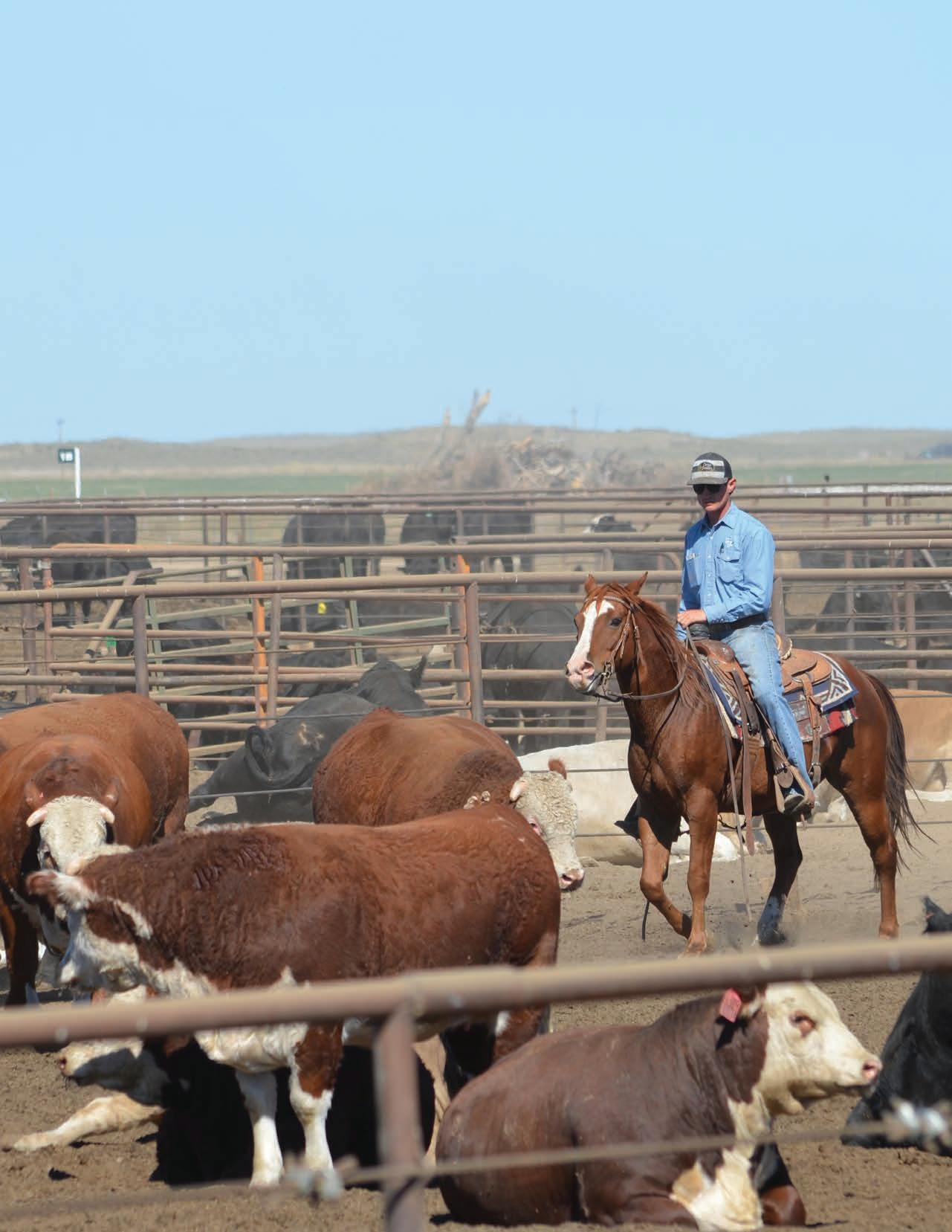
4 minute read
Chapter 4 — Behavior and Handling
CHAPTER 4.
BEHAVIOR AND HANDLING
Advertisement
CHAPTER 4.1
INTRODUCTION
Proper handling management, based on sound animal behavior knowledge, will reduce stress and behavior-related issues. Improper handling that does not consider cattle behavior may lower conception rates and negatively impact immune system and rumen function. This may predispose animals to adverse health events, such as shipping fever or excess shrink and/or bruising, requiring excess carcass trimming at the time of processing. The following information serves as an educational resource. All production practices should be adapted to the specific needs of individual operations.
4.2 Flight Zone
An important concept of livestock handling is the animal’s flight zone or personal space. The size of the flight zone varies depending on how familiar the cattle are to their current surroundings, people, equipment, etc. Properly using an animal’s natural flight zone can facilitate efficient, low-stress cattle movement — guidelines to do so are described with diagrams on the next page.

» Determine the flight zone boundary of an animal or group of animals by slowly walking up to them; they will move away when you have entered their flight zone.
» Avoid entering the animal’s flight zone boundary too deeply or quickly as this may cause them to bolt away or back past you.
» Retreat from an animal’s flight zone boundary if you want it to stop moving.
» Move cattle forward toward a chute by moving toward their rear past their point of balance (eye and shoulder).
» Allow cattle to follow one another in the direction that they are facing.
» Move behind a group of cattle in a zig-zag manner to keep you in their line of sight which will help them to keep moving forward.
» Leave cattle’s flight zone to stop their movement in a chute.
» In the chute, stop cattle by moving forward past their point of balance.
» Concentrate on moving the leader(s) rather than the rear animal(s) if a group of cattle bunch up.

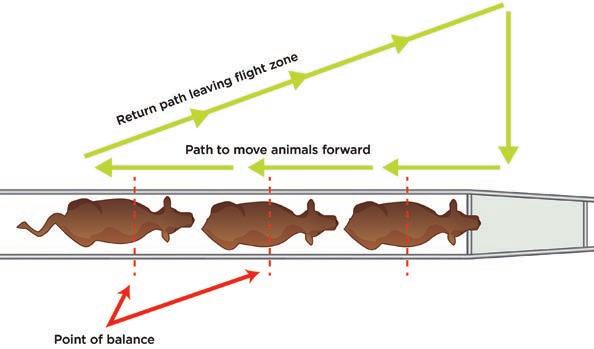
4.3 Cattle Handling Facilities and Equipment
In addition to working with an animal’s flight zone to handle cattle, it is especially important to properly design, construct, maintain, and use cattle handling facilities. When used correctly, facilities and equipment can improve animal well-being and productivity at an operation. Proper worker training at the operation's facilities is important to maintaining this mission. Additional cattle housing considerations can be referenced on BQA.org.
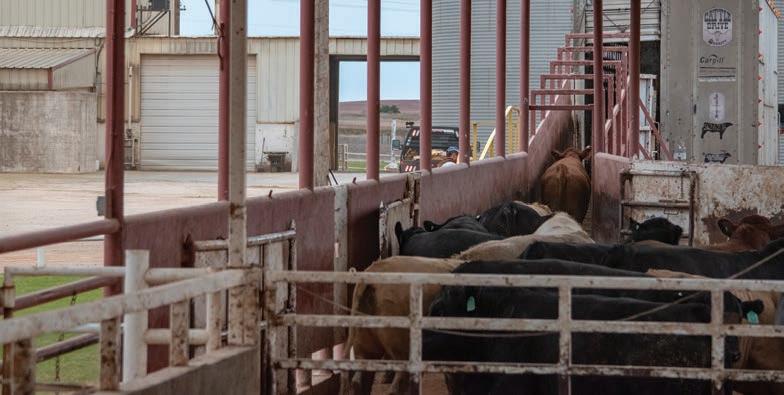
When considering the design and the maintenance of cattle handling facilities and equipment, consider the following: » Ensure facilities and pens have good back gates and the pens, loading ramps, and trailers have non-slip flooring surfaces » To heed appropriate biosecurity precautions, trailers and equipment should be cleaned and disinfected prior to hauling a new load of cattle. » Ensure floors in trailers can properly drain and have adequate traction with non-slip flooring surfaces. » Consider the following features when transporting cattle: protection from weather/ elements, adequate ventilation, amount of space per animal, the potential need for bedding, the direction and force of wind, safe use of mechanical/electrical devices, and waste removal/drainage.
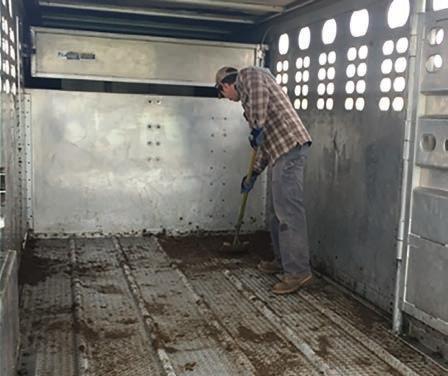

4.4 Temperature Considerations
The normal core body temperature for cattle is 101.5° F, on average. The animal must maintain normal body temperature to sustain essential physiological processes. Properly caring for and handling cattle includes supporting their temperature maintenance and ability to adapt to their regional environment. It is important to prevent or address environmental conditions that approach cattle’s heat and cold thresholds to maintain optimal cattle performance and health.
HEAT
» Transport and load cattle during the cooler times of the day. » Closely coordinate the arrival of a transported load of cattle with delivery location/dispatch so animals are not on trailers longer than necessary. » Work cattle more prone to heat stress first, earlier in the day or later if conditions are moderate. » Limit the amount of time cattle spend in handling facilities or waiting on the trailer when heat stress may be more significant. » Make sure trailers are well ventilated. » Provide access to water after transporting so cattle do not get dehydrated. » Avoid handling cattle when the risk of heat stress is high. If cattle must be handled, a general rule is to work them before the
Temperature Humidity Index (THI) reaches 84. As an example, and as seen in the image below, when the temperature is 98° F and the humidity is 30%, the THI is 83. » At a constant temperature, the THI increases as the relative humidity increases. Each one mile per hour increase in wind speed can decrease the THI by approximately one point.
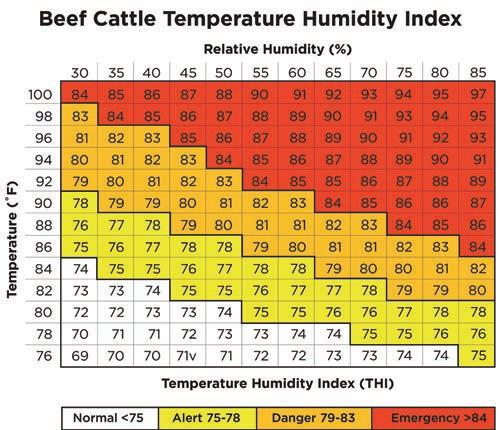
COLD
» Adjust feed and energy rations to match increased maintenance energy requirements of cold-exposed cattle prior to transport. » Prior to transporting, provide windbreaks to reduce wind, moisture, and mud build-up on the cattle while in transport. » Keep cattle dry and cover slats to reduce cold air entering the trailer without reducing ventilation. » Provide bedding in severe conditions to put a barrier between cattle and the frozen ground or trailer floor.


